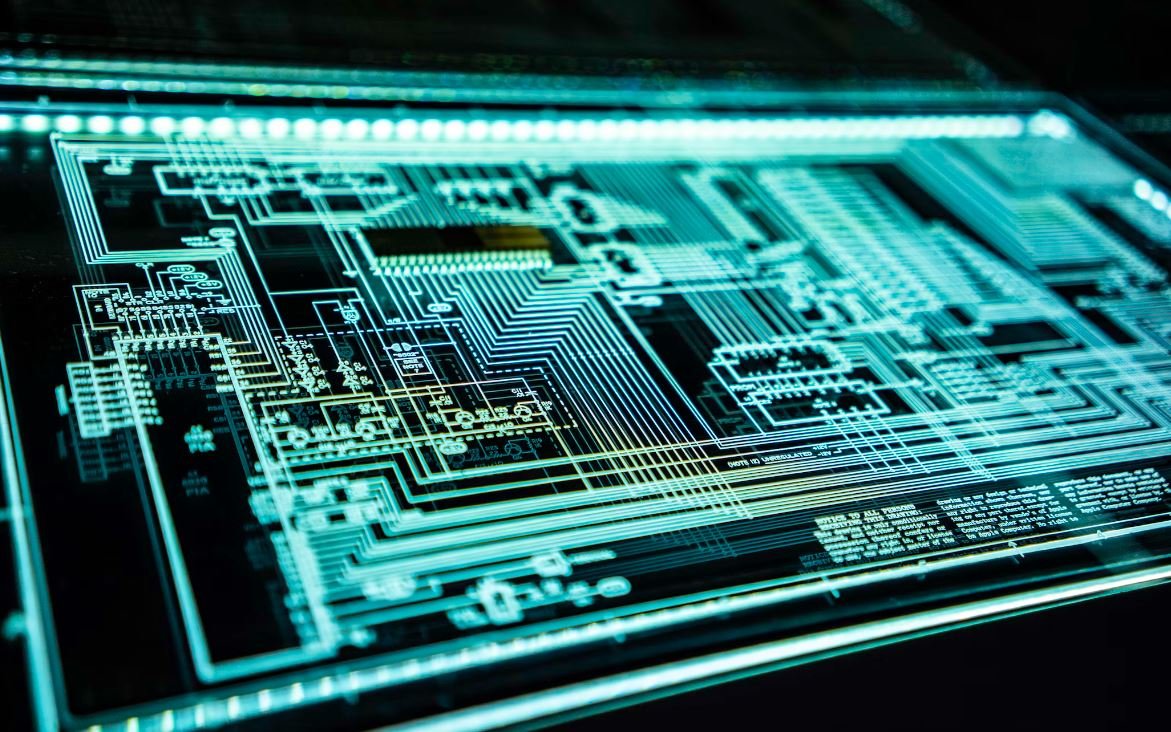Machine Learning or Robotics: Which Is Better?
In today’s technological landscape, machine learning and robotics are two prominent fields that have gained significant attention. While both fields offer exciting opportunities for innovation and advancement, it is essential to understand their differences and strengths to determine which one is better suited for a specific application or problem. Let’s delve into a comparison between these two fascinating disciplines.
Key Takeaways
- Machine learning focuses on developing algorithms that enable computer systems to learn and improve from data.
- Robotics involves designing, building, and programming physical machines or robots to perform specific tasks autonomously.
- Machine learning is highly effective in handling complex and large-scale data analysis tasks.
- Robotics allows for physical interaction with the environment and can perform real-world tasks.
- Combining machine learning and robotics can lead to powerful applications in fields like healthcare, manufacturing, and autonomous vehicles.
Machine Learning
Machine learning is an area of artificial intelligence that focuses on the development of algorithms and models that enable computers to learn and make data-driven predictions or decisions without being explicitly programmed. Machine learning algorithms employ statistical techniques to identify patterns and trends in data, allowing computers to learn and improve from experience.
Machine learning has wide-ranging applications, from spam detection in emails to self-driving cars. It can be used in various fields, including finance, healthcare, marketing, and more. By analyzing vast amounts of data, machine learning algorithms can uncover valuable insights and make accurate predictions or recommendations.
Machine learning techniques include supervised learning, unsupervised learning, and reinforcement learning. Supervised learning algorithms are taught on labeled data, unsupervised learning algorithms discover patterns in unlabeled data, and reinforcement learning algorithms learn through trial and error interactions with an environment.
Robotics
Robotics, on the other hand, involves the design, construction, operation, and programming of physical machines or robots to perform tasks autonomously or semi-autonomously. Robots can have various forms, from industrial arms used in manufacturing to humanoid robots used in research or entertainment.
Robotics allows for the interaction of physical systems with the environment. Robots are capable of sensing, perceiving, and manipulating objects, enabling them to perform real-world tasks that involve physical contact. Applications of robotics range from automated manufacturing processes to space exploration and surgical procedures.
Robots can be programmed using various approaches, including rule-based programming, behavior-based programming, and learning-based programming. Integrated with sensors and actuators, robots are capable of perceiving the environment and executing pre-defined tasks or adapting to changing circumstances.
Comparison: Machine Learning vs. Robotics
| Machine Learning | Robotics |
|---|---|
| Focuses on data analysis and prediction | Focuses on physical interaction and task execution |
| Deals primarily with software-based algorithms | Involves hardware design and programming |
| Works with large-scale and complex data | Interacts with the environment using sensors and actuators |
| Can operate without physical presence | Requires a physical embodiment |
| Applications include predictive analytics, recommendation systems, and image recognition | Applications include industrial automation, autonomous vehicles, and space exploration |
Combining Machine Learning and Robotics
While both machine learning and robotics have their unique strengths, they are not mutually exclusive. In fact, the combination of these two fields can unlock powerful applications with unprecedented capabilities.
By integrating machine learning techniques into robotics systems, robots can analyze sensor data, learn from their environment, and make intelligent decisions. This enables them to adapt to changing conditions, enhance their performance, and perform tasks with higher efficiency and accuracy.
In the healthcare industry, for example, combining machine learning and robotics can lead to advancements such as surgical robots that can analyze medical images, predict patient outcomes, and assist surgeons in real-time. In manufacturing, machine learning can optimize production processes, while robotics can automate repetitive tasks.
Benefits of Integrating Machine Learning and Robotics
- Enhanced adaptability and autonomous decision-making capabilities for robots.
- Improved efficiency and accuracy in performing complex tasks.
- Ability to handle and process large amounts of data in real-time.
- Opening up new possibilities in fields like healthcare, manufacturing, and autonomous vehicles.
Conclusion
While the comparison between machine learning and robotics highlights their distinct characteristics, it is essential to recognize that both have unique strengths and can complement each other in various applications. The integration of machine learning techniques into robotics systems opens up a realm of possibilities, enabling intelligent robots that can learn, adapt, and make informed decisions in real-time, leading to advancements and breakthroughs across industries.

Common Misconceptions
Machine Learning or Robotics: Which Is Better?
There are several common misconceptions that people often have when comparing machine learning and robotics. One of the biggest misconceptions is that the two are mutually exclusive, with one being better than the other. However, the truth is that machine learning and robotics are two different fields with their own unique advantages and applications.
- Machine learning and robotics are different fields with unique advantages and applications
- Both machine learning and robotics can complement each other in various scenarios
- Neither machine learning nor robotics is inherently better, as their effectiveness depends on the specific use case
Another common misconception is that robotics always involves complex physical systems, while machine learning is limited to software algorithms. While it is true that robotics often involves physical systems, machine learning can also be applied in the realm of robotics to enhance capabilities, such as object detection or motion planning.
- Robotics can involve both physical hardware and software components
- Machine learning can be used to improve the capabilities and performance of robotic systems
- The integration of machine learning in robotics enables more advanced and intelligent behaviors
Furthermore, some mistakenly believe that machine learning is only used for automation and removing human involvement. While automation is indeed a major application of machine learning, its scope is much broader. Machine learning can be applied to tasks such as image recognition, language translation, data analysis, and even medical diagnosis.
- Machine learning can be applied to a wide range of tasks beyond automation
- It can help in tasks like image recognition, language translation, and data analysis
- Machine learning is a versatile tool with applications in various industries
Another common misconception is that robotics is limited to the realm of science fiction, often seen as futuristic machines that can mimic human behavior. However, robotics has already found its way into many practical applications, from manufacturing and logistics to healthcare and agriculture.
- Robotics is already used in practical applications in various industries
- It can improve efficiency, safety, and precision in sectors like manufacturing and healthcare
- Robotic systems have a wide range of practical uses beyond science fiction
Lastly, some people mistakenly believe that either machine learning or robotics will eventually replace human jobs entirely. While it is true that automation can lead to job displacement in certain areas, it is important to recognize that machine learning and robotics can also create new job opportunities. These technologies can augment human capabilities and lead to the development of new industries.
- Machine learning and robotics can both lead to job displacement and job creation
- They can augment human capabilities and improve efficiency in the workforce
- New job opportunities can arise as a result of technological advancements in these fields

Introduction
Machine Learning and Robotics are two cutting-edge technologies that have revolutionized various industries. Machine Learning involves training machines to learn from data and make predictions or decisions, while Robotics focuses on creating intelligent machines capable of performing tasks without human intervention. This article aims to compare the two technologies and shed light on their strengths and weaknesses. The following tables present key points and data related to Machine Learning and Robotics:
Table: Employment Opportunities
Machine Learning and Robotics have opened up significant employment opportunities in various sectors. While both fields offer promising career paths, Machine Learning seems to offer a broader range of job opportunities across different industries, including healthcare, finance, and marketing.
| Machine Learning | Robotics |
|---|---|
| High demand for data scientists and machine learning engineers | Specialized roles in robotics engineering |
| Opportunities in diverse industries | Predominantly focuses on manufacturing and automation industries |
Table: Ethical Considerations
As technology advances, ethical considerations become increasingly important. Both Machine Learning and Robotics raise ethical concerns, such as biased algorithms or the potential for job displacement. However, the consequences of failures in Robotics can be more severe, including risks related to physical harm or security breaches.
| Machine Learning | Robotics |
|---|---|
| Concerns about bias and unfair decision-making | Potential physical harm or security risks |
| Less severe consequences in terms of safety | Possible job displacement due to automation |
Table: Advancements in Medicine
Both Machine Learning and Robotics have revolutionized the field of medicine, improving diagnostics, treatment, and patient care. While Machine Learning plays a crucial role in data analysis and predicting diseases, Robotics enables precise surgeries and assists in rehabilitation.
| Machine Learning | Robotics |
|---|---|
| Improved disease diagnosis and prediction | Precision surgeries and minimally invasive procedures |
| Efficient utilization of medical data for research | Assistance in rehabilitation and physical therapy |
Table: Impact on the Job Market
The integration of Machine Learning and Robotics inevitably impacts the job market. While the fear of job displacement exists, the technologies also create new roles and opportunities for individuals. Collaborative efforts between humans and intelligent machines can lead to enhanced efficiency and productivity.
| Machine Learning | Robotics |
|---|---|
| Potential job displacement in certain sectors | Automation of repetitive and hazardous tasks |
| New roles and job opportunities | Collaborative work environments with machines |
Table: Environmental Impact
Considering the ecological footprint is crucial for both Machine Learning and Robotics. While the development and usage of these technologies may require resources, they can also contribute to environmental sustainability through optimized processes and reduced energy consumption.
| Machine Learning | Robotics |
|---|---|
| Optimizing processes for energy efficiency | Automated systems with lower energy requirements |
| Reduces paper usage through digitalization | Enhance recycling and waste management |
Table: Limitations
While Machine Learning and Robotics bring numerous benefits, they also have certain limitations that need to be considered. Understanding these limitations helps in addressing challenges and advancing the technologies to achieve their full potential.
| Machine Learning | Robotics |
|---|---|
| Reliance on quality data for accurate predictions | Complexity in developing fully autonomous systems |
| Data privacy and security concerns | Situational adaptability in unstructured environments |
Table: Consumer Applications
Both Machine Learning and Robotics have made their way into various consumer applications, simplifying daily tasks and enhancing user experiences. Machine Learning aids in personalized recommendations, while Robotics improves household automation and offers companionship through social robots.
| Machine Learning | Robotics |
|---|---|
| Personalized recommendations and virtual assistants | Household automation and smart appliances |
| Fraud detection and improved customer service | Social robots for companionship and assistance |
Table: Education and Research
Machine Learning and Robotics play a crucial role in shaping the future of education and research. These technologies facilitate adaptive learning environments, automate administrative tasks, and enable breakthroughs in scientific exploration.
| Machine Learning | Robotics |
|---|---|
| Adaptive learning platforms and personalized tutoring | Efficient laboratory automation and experiment execution |
| Analyzing large-scale datasets for research insights | Enabling exploration in extreme environments |
Table: Future Applications
The future of Machine Learning and Robotics holds immense potential for innovation across various industries. From self-driving cars to space exploration, the continued development and integration of these technologies will propel us towards a more technologically advanced future.
| Machine Learning | Robotics |
|---|---|
| Autonomous vehicles and intelligent transportation systems | Exploration of space and planetary resources |
| Enhanced cybersecurity and fraud prevention | Assistive robots for elderly care and medical support |
Conclusion
Machine Learning and Robotics are extraordinary fields that have transformed industries and broadened our technological horizons. While both technologies have strengths and weaknesses, their integration leads to synergistic effects that push the boundaries of innovation. Machine Learning‘s versatility and widespread applications highlight its potential in various domains. Simultaneously, Robotics’ ability to automate tasks and physical interactions underscores its value in fields requiring precise operations. Ultimately, the choice between Machine Learning and Robotics depends on the specific goals, requirements, and applications envisioned. Embracing the possibilities of both technologies allows us to unlock the full potential of artificial intelligence and shape a more advanced future.
Frequently Asked Questions
Machine Learning or Robotics: Which Is Better?
-
What is machine learning?
- Machine learning is a subfield of artificial intelligence that focuses on developing algorithms and models that enable computer systems to learn and make predictions or decisions without explicit programming. It involves analyzing large amounts of data to identify patterns and make accurate predictions.
-
What is robotics?
- Robotics is a field of science and technology that involves designing, constructing, and operating robots. Robots are mechanical or virtual artificial agents programmed to perform various tasks autonomously or as guided by human input. Robotics combines elements of mechanical engineering, electrical engineering, and computer science.
-
What are the main differences between machine learning and robotics?
- While machine learning focuses on developing algorithms and models for analyzing data and making predictions, robotics deals with designing, building, and operating physical or virtual robots. Machine learning is generally considered a subset of artificial intelligence, whereas robotics is a multidisciplinary field encompassing mechanical engineering, electrical engineering, and computer science.
-
Which field offers better career prospects?
- Both machine learning and robotics offer promising career prospects. Machine learning professionals are in high demand, especially in industries such as healthcare, finance, and technology. Robotics experts also have a wide range of career opportunities, including industrial automation, healthcare robotics, and space exploration. The choice ultimately depends on an individual’s interests and desired career path.
-
Can machine learning be applied in robotics?
- Yes, machine learning techniques can be applied in robotics to enhance robot learning, perception, and decision-making capabilities. For example, machine learning algorithms can be used to train robots to recognize objects, navigate complex environments, or perform tasks more efficiently. Machine learning and robotics are often interconnected, with machine learning contributing to the improvement of robotic systems.
-
Which field has more potential for innovation?
- Both machine learning and robotics have immense potential for innovation. Machine learning advancements are fueling breakthroughs in fields such as healthcare, self-driving cars, and natural language processing. Robotics, on the other hand, is constantly evolving with the development of new hardware, sensors, and algorithms. Ultimately, the potential for innovation in both fields is significant and continually expanding.
-
Are there any ethical concerns associated with machine learning or robotics?
- Both machine learning and robotics raise ethical concerns that need to be addressed. In machine learning, issues such as algorithmic bias, data privacy, and the impact on employment are important considerations. Robotics ethics involve questions around the autonomy and responsibility of robots, as well as potential consequences for human safety and job displacement. Ensuring ethical practices is crucial in both fields.
-
Can machine learning and robotics be combined?
- Absolutely. Machine learning and robotics can be combined to create intelligent robotic systems capable of learning from their environment and improving their performance over time. By integrating machine learning algorithms into robotic systems, it is possible to enhance their capabilities, adaptability, and decision-making processes. This combination has the potential to revolutionize various industries and bring about significant advancements.
-
Are there any limitations to machine learning or robotics?
- Both machine learning and robotics have their limitations. Machine learning models can struggle with interpretability, scalability, and the need for large amounts of quality data. Robotics faces challenges such as sensor limitations, high costs of development, and the complexity of creating robots that can operate in diverse environments. Overcoming these limitations requires ongoing research and advancements in the respective fields.
-
How can one start a career in machine learning or robotics?
- To begin a career in machine learning, one can start by gaining a strong foundation in mathematics, statistics, and programming. Learning popular machine learning frameworks and algorithms is essential. For robotics, a background in engineering, computer science, or a related field is beneficial. Acquiring knowledge of robotics software, hardware, and control systems is crucial. Additionally, participating in projects, internships, and online courses can provide valuable hands-on experience.




